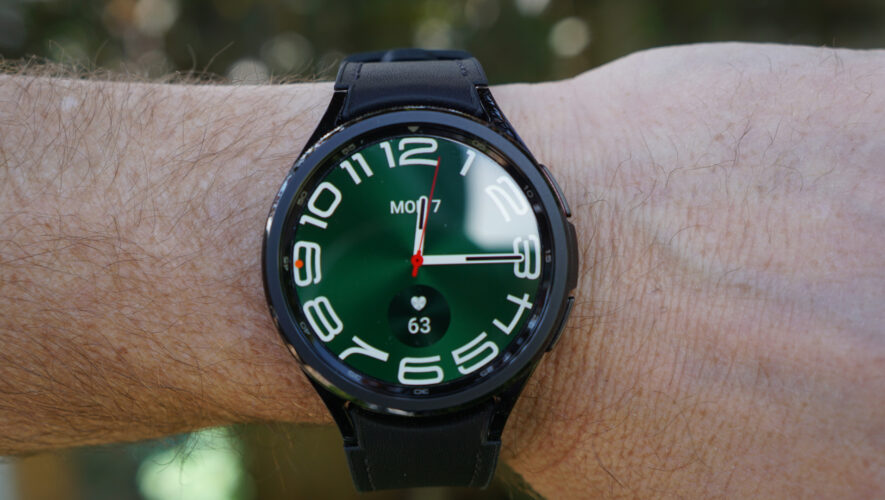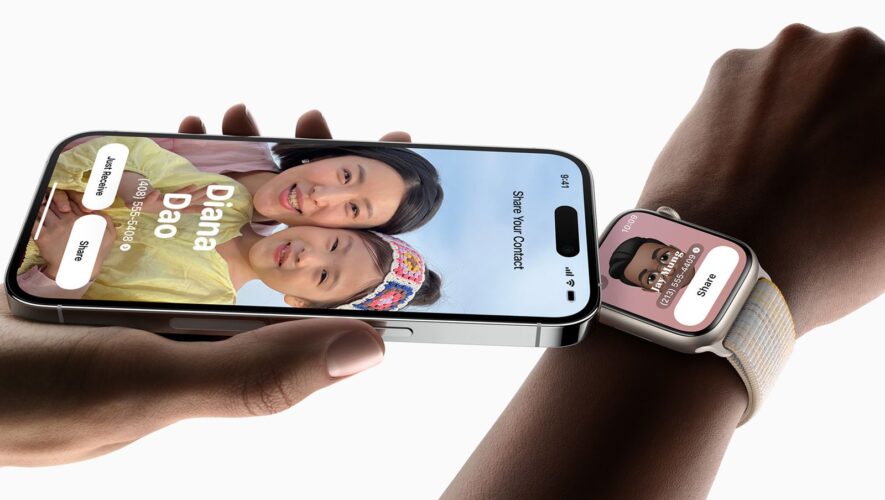Apple was pretty late to the sleep tracking party compared to competitors. While it was possible to get some sleep data through third party apps on the Apple Watch, native support for sleep tracking only arrived in 2020 and that only included basic sleep tracking, with no sleep stages offered. It wasn’t until the launch of watchOS 9 in 2022 that sleep stages arrived and sleep tracking on Apple Watch became more useful and more in line with what is offered by the likes of Fitbit and Garmin on their devices.
There are still some features surrounding sleep tracking we’d like to see on Apple Watch, like an equivalent to Garmin’s Body Battery and Fitbit’s Readiness Score, but here we are looking at how sleep tracking on Apple Watch currently works and what it offers.
Apple Watch Series 8 $321 $399 Save $78
The Apple Watch Series 8 has a great design, heaps of sensors, and more features than you’ll probably know what to do with. Its battery life isn’t the best on the smartwatch market, but fast charging makes it easy to charge daily and the fitness features are superb.
How does Apple Watch sleep tracking work?
When Apple’s sleep tracking on Apple Watch first arrived in 2020, it integrated with the Bedtime feature on the iPhone’s Clock app, though things have changed a little since then. The Bedtime feature is now called Sleep and it is part of the Focus modes that transfer between iPhone, Apple Watch and Mac.
In order to track your sleep, you have to wear your Apple Watch to bed, you’ll need to have turned sleep tracking on and your Apple Watch needs to be in Sleep mode – or Sleep Focus as it is now called. You also have to be asleep for four hours or more for tracking to kick in, so you can’t track naps with Apple Watch sleep tracking.
When the Sleep Focus is on, all notifications will be silenced, though you can personalise the Sleep Focus to allow certain apps or certain contacts to still appear on your Lock Screen. To personalise the Sleep Focus, tap and hold the Focus tile from the Control Centre and tap on the three dots on the right of the Sleep Focus. You can then tap on Settings.
Along with the ability to allow notifications from selected contacts or apps, you can also customise a Lock Screen and Home Screen on your iPhone, as well as customise your Apple Watch screen. You can also toggle on a ‘Sleep Screen’ for your iPhone and Apple Watch that simplifies your Lock Screens to reduce distractions, and you can toggle on or off ‘Show Time’ depending on whether you want to see the time when your devices are in Sleep Focus.
You can also access your Schedule within the Sleep Focus, choosing a time to start winding down and a time you want to wake up.
What is Apple’s Sleep Schedule and how do you adjust it?
Within Apple’s sleep tracking offering, you can create personalised sleep schedules on iPhone to try and meet your sleep goals and this can be done regardless of whether you have an Apple Watch or not, or whether you choose to track your sleep or not. You do this within the Health app on your iPhone and once you tap on ‘Get Started’ under Set Up Sleep, you’ll be able to set sleep goals – or the number of hours you would like to spend asleep – set your Bedtime and Wake Up times and set the Sleep Focus, which we mentioned above.
You’ll find your Sleep Schedule, sleep settings and sleep tracking in a number of places, which is somewhat confusing at first but does make sense because it ties several things together. These are all the places you’ll find the Sleep Schedule and sleep tracking settings:
You can set up and configure Sleep in the Sleep app on your Apple Watch, the Health app on iPhone and the Sleep section of the Apple Watch app on iPhone). You can edit all Sleep Settings in the Sleep section of the Apple Watch app (tap on Manage Sleep Focus in Settings) on iPhone or the Health app on iPhone. You can edit the Sleep schedule and alarm on Apple Watch as well as in the Clock app on iPhone. Before the allocated bedtime you’ve set, you’ll be ‘prepared’ for sleep with a wind-down time (we’ve set it for 30 minutes here) while your Apple Watch becomes dimmed and locked – your Watch is now in Sleep Focus and whatever settings you have chosen for Sleep Focus will be applied. Be warned of this if you’re out for the evening as your Watch will still go into Sleep Focus at the time you’ve scheduled so it’s easy to miss notifications if you don’t forget to turn Sleep Focus off until you get home.
You can also choose whether or not to have charging reminders – your Apple Watch will warn you within an hour of bedtime if you have less than 30 percent charge.
If you have a newer Apple Watch, like the Watch Ultra, Watch SE or Watch Series 8, you’ll almost certainly be OK to go through the night if you charged for a bit during the day at some point. Sleep tracking uses around 10 per cent of battery in total. With older Apple Watch models, you will likely need to fully charge in the day to last the night.
While in Sleep Focus, you need to turn the Digital Crown to unlock the Apple Watch, just as you do when you step out of water after swimming. It’s a bit irritating if you need to get up in the night and use the torch, for example, but that’s how it is so it’s tough luck really.
You can disable Sleep Focus if you want, but your Apple Watch won’t track sleep if you do this. You can also opt out of sleep tracking entirely, even if you have Sleep Focus enabled.
The good thing about Apple Watch sleep tracking is that it is set-and-forget, so your sleep will be tracked without you having to do anything once Sleep Focus is on if you’ve chosen this.
The results you get from sleep tracking with Apple Watch
Apple’s sleep tracking initially concentrated on the amount of time spent in bed and as such, was a little less nuanced than what was offered by the likes of Fitbit. That changed with watchOS 9 though, as we mentioned at the beginning of this feature. You now get sleep stages, making sleep tracking on Apple Watch much more useful.
If you want to look at the results of your sleep, go to Browse > Sleep in the Health app. There are four tabs at the top: Day (D), Week (W), Month (M) and Six Months (6M). When on the ‘D’ tab, you will see a sleep graph broken down into the four stages of sleep that most devices use: Awake, REM, Core and Deep. At the top of the graph, you’ll see your Time in Bed, which is the time Sleep Focus was activated, and Time Asleep, which is the amount of time Apple Watch tracked you as being asleep.
If you tap on any of the Week, Month or Six Months tabs, you will see the sleep stages condensed into a bar graph, allowing you to see your sleep compared to previous days in a week, month or over the last six months.
You can also tap on ‘Show More Sleep Data’, which will give you more information about your sleep, including the amount of time in each of the four stages and the percentages of time in each of the four stages when on the Stages tab. There is also an Amounts tab that offers up a bar chart to show your time in bed against your time asleep and a Comparisons tab to show you how your Heart Rate, Respiratory Rate and Wrist Temperature varied through the Day, Week, Month, or over the last six months.
Below the graphs at the top of any of the D, W, M, 6M tabs, you’ll find a Highlights section. This shows you your Respiratory Rate and Heart Rate. You can tap on Show All next to the Highlights section to see more information and trends over time.
How to set up sleep tracking on Apple Watch
1. Ensure your Apple Watch is on watchOS 9 or later and your iPhone is running iOS 16 or later.
2. In the Health app on your iPhone, set up Sleep. You can also go through this process on the Apple Watch itself in the Sleep app.
3. Firstly, choose the duration of sleep – this is a Sleep goal but it isn’t tracked in the iPhone Activity app like your rings (you can view it in the Health app on iPhone). We’ve chosen eight hours, though it’s most certainly an aspiration rather than a reality.
4. Next, you set when bedtime begins and when you need to wake up. There are actually several options here, so go through them carefully. Do you need to set it for every day, or just weekdays, for example.
5. You’ll need to set a relaxation time before you go to bed – you can also choose to link this to a Siri Shortcut to do other automation such as turning off a light at home, for example. Wind Down can also be linked to a music playlist, for example.
6. You can decide whether or not to set an alarm and how you want it to sound. Note that this won’t replace your existing alarms on Apple Watch (or your iPhone – you need to turn those off manually).
Your alarm will sound on your iPhone if you don’t have your Apple Watch on and on your Watch if you do have it on. You can fully configure the alarm sound as well. If your Watch is set to silent, it will just vibrate.
7. You can see your sleep patterns in the Health app on iPhone – view by week, month or six months.
Pocket-lint
https://www.pocket-lint.com/how-to-track-your-sleep-with-apple-watch/



